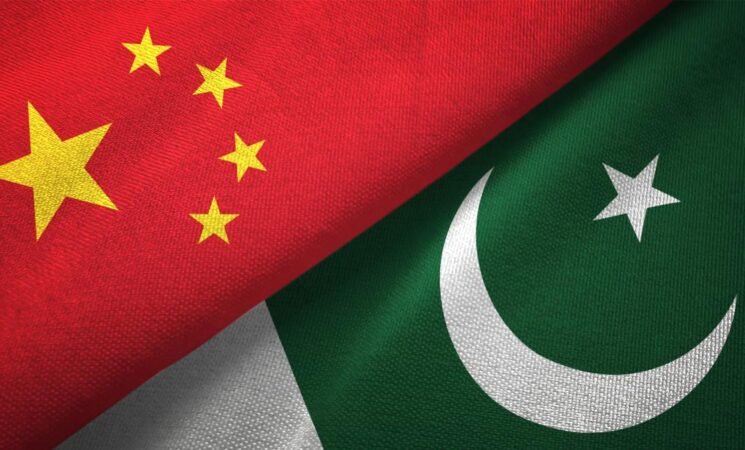02 August 2025, NIICE Commentary 11534
Akhilesh Kumar
Artificial Intelligence and the Evolving Nature of Geopolitics
Artificial intelligence (AI) is changing every facet of geopolitical collaboration, including how nations interact on matters of strategic alliances and socioeconomic development. AI is becoming a revolutionary force in this setting, propelling innovation, economic growth, and regional cooperation through its incorporation into frameworks such as the China-Pakistan Economic Corridor (CPEC). With the speed at which technology is developing, artificial intelligence (AI) is emerging as a major driver for bettering governance, building sustainable development, and improving infrastructure throughout the area. The China-Pakistan Economic Corridor (中巴经济走廊 CPEC), a flagship initiative of China’s Belt and Road Initiative (一带一路BRI), is embracing this shift in its second phase (From 2020 onwards), steering its focus from infrastructure development to high-tech collaboration. This evolution reflects the growing importance of AI in global development narratives and highlights the strength of Sino-Pakistani relations as a model of innovative cooperation.
At its core, AI under CPEC is more than a technological upgrade, it is a vision for a shared future. By intertwining Pakistan’s aspirations for economic revival and technological progress with China’s leadership in AI and digital innovation, this partnership sets the stage for South Asia’s technological transformation. As AI-driven projects reshape sectors like energy, health, and agriculture, they also exemplify the promise of South-South cooperation in addressing shared challenges and unlocking new opportunities for sustainable growth.
Evolution of CPEC: From Infra-Driven to Innovation-Driven Corridor
The first phase of the China-Pakistan Economic Corridor (CPEC) (2015–2020) marked a beginning for this flagship initiative under BRI. With an initial investment of $46 billion (currently estimated at $62 billion), this phase laid the groundwork for economic connectivity and development through a robust focus on infrastructure and energy projects. At the heart of this phase was the operationalization of Gwadar Port, a critical linchpin in connecting Western China to global markets via the Arabian Sea. This deep-sea port is a strategic asset and a symbol of China's and Pakistan's shared vision for regional trade and connectivity.
On the other hand, the energy sector witnessed remarkable progress, with projects adding 10,000 MW of electricity to Pakistan's national grid. This was a much-needed boost for a nation grappling with chronic energy shortages, underscoring the potential of CPEC to transform Pakistan's economic landscape.
Transport infrastructure also saw significant upgrades, including modernising the historic Karakoram Highway and introducing urban transit systems like the Orange Line Metro. These projects exemplify the commitment to enhancing regional connectivity and facilitating trade and mobility.
Special Economic Zones (SEZs) were developed to sustain industrial growth, creating investment and job creation hubs. These zones aim to catalyze Pakistan's industrial capabilities, integrating local industries into global supply chains and boosting exports.
In its first phase, CPEC addressed Pakistan's immediate infrastructure needs and set the stage for its evolution into a tech-driven economy. It signalled the potential of Sino-Pakistani cooperation to foster sustainable development and economic integration, resonating well beyond the borders of the two nations.
The second phase of the China-Pakistan Economic Corridor (CPEC) marks a strategic shift from traditional infrastructure projects to fostering high-tech industries and knowledge-based economies. Central to this transition is the collaboration in science and technology, particularly in artificial intelligence (AI). Milestones such as the establishment of the Pakistan-China Joint Lab for Artificial Intelligence and Smart Agriculture at the University of Agriculture Faisalabad in 2024 and the High Standard AI Lab at the National University of Science and Technology (NUST) in 2022 reflect this forward-thinking partnership. These initiatives focus on developing advanced AI applications, including pattern and facial recognition algorithms, alongside promoting smart city technologies and renewable energy integration. Complemented by talent development programs and joint AI innovation efforts, this phase seeks to elevate Pakistan’s industrial capabilities while integrating AI into CPEC projects to boost efficiency and sustainability. These advancements embody a vision of progress powered by technological cooperation and innovation.
China-Pakistan relations, often described as “ironclad,” have gained new momentum through their shared focus on CPEC and AI-driven collaboration. Pakistan’s leadership views this partnership as a gateway to economic revival and technological advancement, emphasizing the nation’s strategic role within China’s Belt and Road Initiative (BRI). On the other hand, Chinese President Xi Jinping has underscored Pakistan’s status as a “time-tested friend,” highlighting the significance of cooperation in emerging technologies like AI as a model for advancing and nurturing regional partnerships. This evolving alliance is not just about economic and technological progress but a strategic response to shifting global power dynamics. By deepening their technological interdependence, China and Pakistan are leveraging innovation as a tool for regional stability and shared growth.
Challenges to CPEC
While the China-Pakistan Economic Corridor (CPEC) represents a monumental opportunity, it is not without its challenges. Security remains a significant concern, particularly in Balochistan, where insurgent groups like the Baloch Liberation Army (BLA) frequently target Chinese nationals and infrastructure projects. These threats, compounded by separatist movements, pose barriers to sustained progress. Geopolitically, India’s opposition to CPEC, citing its route through Pakistan-occupied Kashmir (PoK), frames the initiative as a challenge to its regional influence, adding another layer of complexity to the corridor’s implementation. Domestically, economic and social hurdles such as limited capacity to adopt high-tech industries and opposition from local communities regarding land use and resource allocation further complicate the initiative’s trajectory.
AI Collaborations under CPEC: Building Bridges through Innovation
Amidst these challenges, integrating artificial intelligence (AI) into CPEC projects showcases the potential for transformative impact. Key collaborations include the development of AI-based renewable energy grids, AI-powered transport systems such as New Energy Vehicles (NEVs), and cutting-edge research partnerships focusing on agriculture and public health. Joint innovation hubs are strengthening advancements in digital infrastructure. At the same time, educational exchange programs enable Pakistani students to study in Chinese universities and equip professionals with expertise in AI and emerging technologies. These initiatives address Pakistan’s technological gaps and strengthen the foundation of China-Pakistan cooperation, positioning the partnership as a beacon of innovation and mutual growth in the Global South.
A Shared Future through AI Cooperation
Integrating artificial intelligence (AI) within the China-Pakistan Economic Corridor (CPEC) transcends bilateral collaboration, symbolising a broader commitment to building a shared future for humankind. This partnership embodies the vision of leveraging technology for collective prosperity, positioning innovation as a bridge across nations and communities. By focusing on AI-driven advancements in energy, infrastructure, health, and agriculture, this cooperation transforms CPEC and reinforces Pakistan’s Vision 2025, a roadmap to economic resilience, technological leadership, and sustainable development.
Moreover, the success of AI under CPEC stands as a testament to the potential of South-South technological cooperation. It showcases how nations of the Global South can overcome shared challenges, pool resources, and build capacity to achieve mutually beneficial outcomes. Through initiatives like AI education, research hubs, and industry collaborations, China and Pakistan set a precedent for technological diplomacy that prioritises inclusivity and shared growth.
Akhilesh Kumar is a PhD candidate in Chinese Studies at Jawaharlal Nehru University, New Delhi, India, specialising in Chinese Studies & with research interests spanning artificial intelligence, new energy vehicles, and ecological civilisation.

